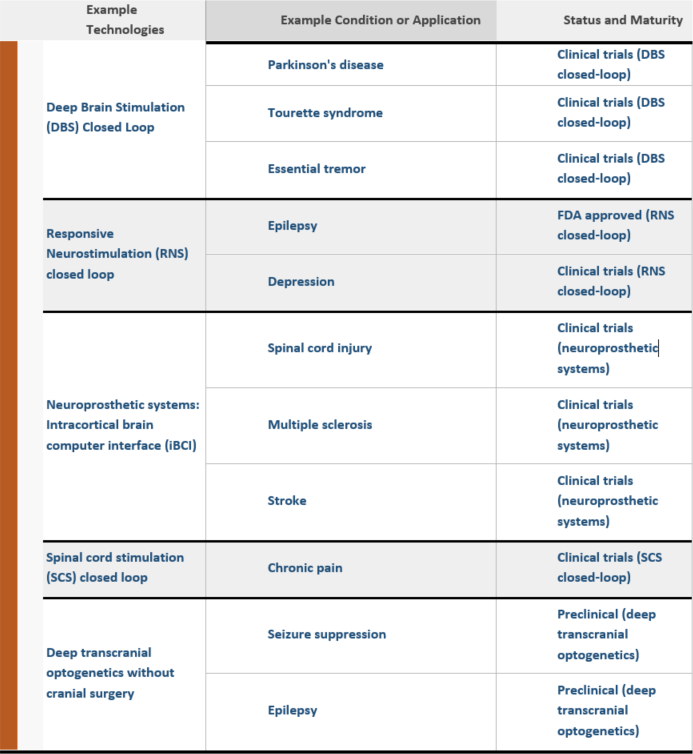Closed-Loop Neurotechnology for Medical Applications
Closed-loop or feedback-controlled neurotechnologies combine measurement and stimulation with the goal of more accurately controlling the state of a specific physiological signal for therapeutic purposes. Thus, neurotechnologies belonging to this category should be able to both read from and stimulate the nervous system. For example, closed-loop systems to prevent seizures use intracranial electrodes to monitor brain signals. When those signals indicate an impending seizure, electrical stimulation is automatically delivered through intracranial electrodes to prevent the seizure onset.
To date, one system to suppress severe epileptic seizures, the NeuroPace RNS, has been granted FDA approval in the US (FDA, 2022). Other types of closed loop systems operate like a thermostat to regulate a physiological variable. For instance, using similar electrical recording and stimulation capabilities, researchers are working on techniques to adjust the amplitude or frequency of an electrical stimulus to maintain a variable—like movement—within a specified region. Closed-loop systems can provide more patient-specific therapies, and rapidly adjust in real-time to maintain stable operation throughout the day. In many cases these closed-loop systems can also be more energy-efficient. Note that certain technologies, such as intracortical BCIs used for the real-time control of a computer interface or physical end effector, may be classified as neurophysiologically closed-loop (AKA “human-in-the-loop”) systems even when they do not incorporate any direct neural stimulation feedback. The reason is that these systems use recorded neural activity to control an external apparatus, which provides direct visual feedback to the controller (the user) about how to modulate its own activity to achieve better control. Hence, from a neurophysiological standpoint, the sensory feedback effectively closes the loop. These “human-in-the-loop” systems using open-loop BCI controllers should be distinguished from BCI systems that use an internal (“closed”) control loop to automatically modulate the output of the BCI decoder based on error signals measured by the system.

Table 1.3 Examples of Existing and Anticipated Closed-loop Medical Neurotechnologies


